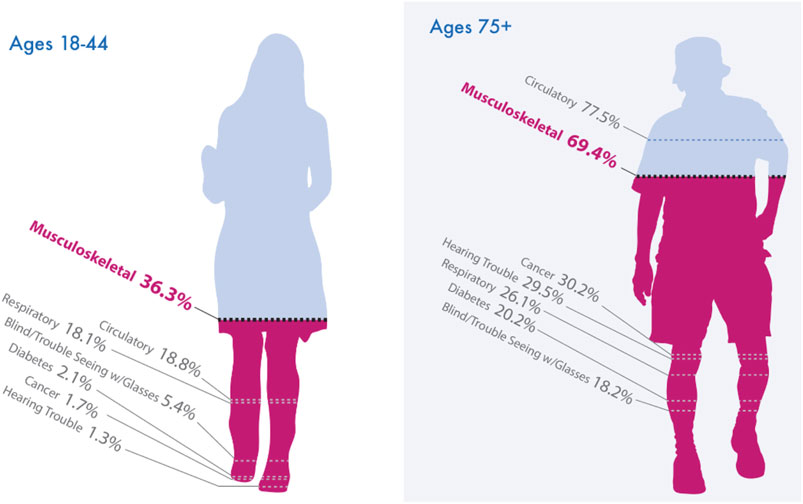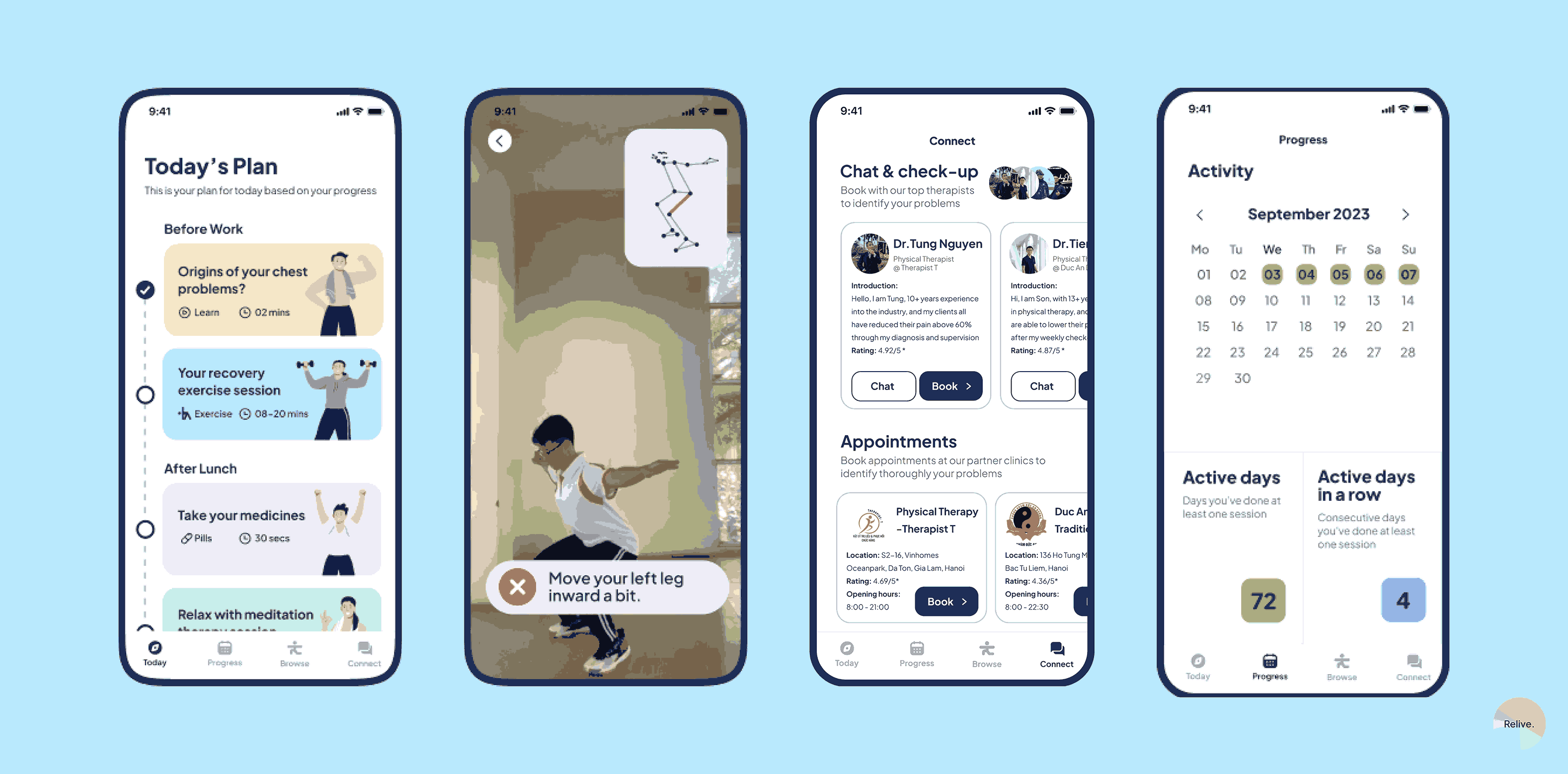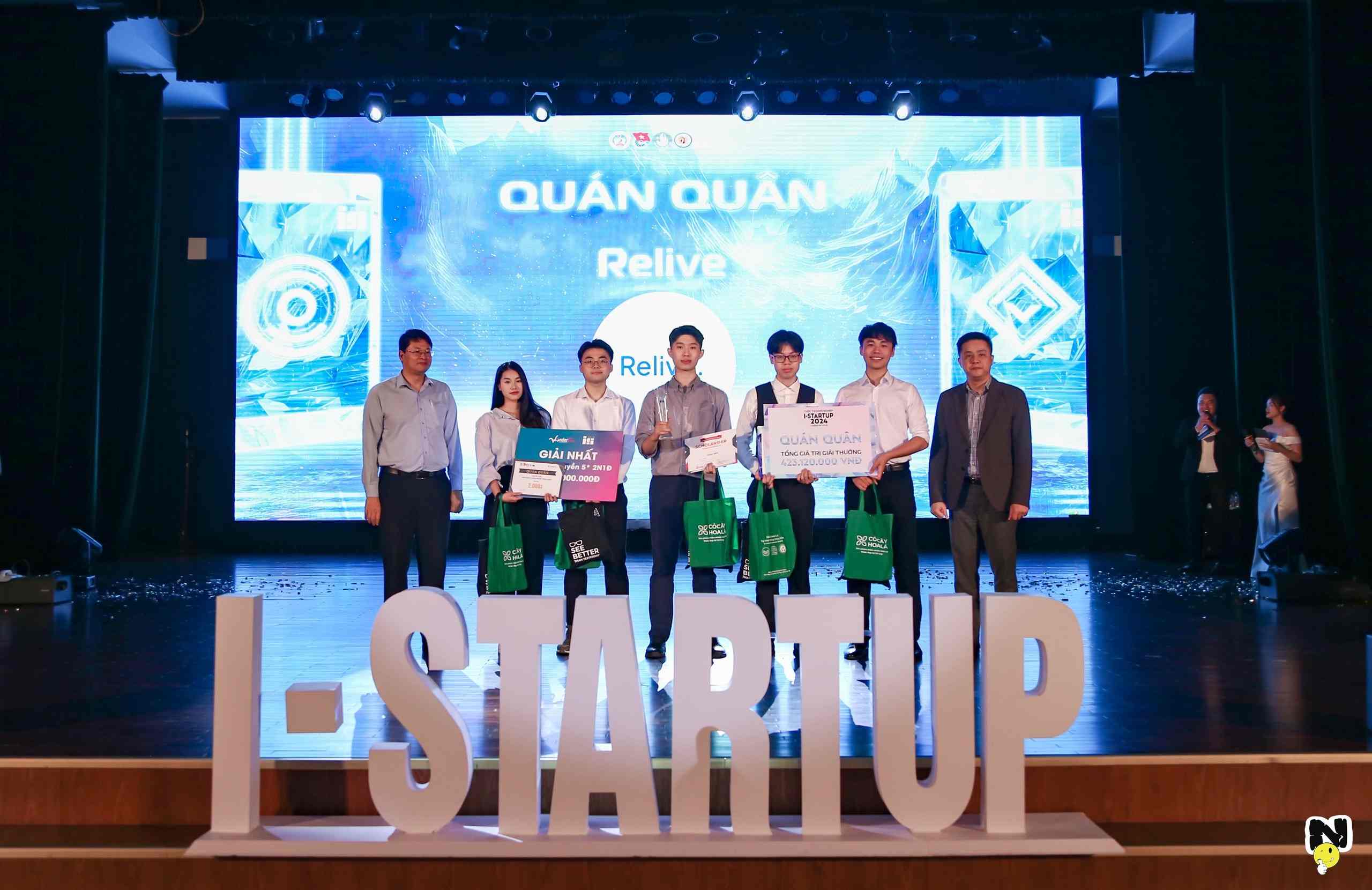[VinUni, May 2024] – Musculoskeletal (MSK) conditions are a significant global health issue, affecting over 1.71 billion people worldwide. In Vietnam, nearly 39.4% of workers aged 35 and older are diagnosed with MSK problems, and the incidence among younger populations is rising. Traditional treatments, such as painkillers, acupuncture, and surgery, often fail to address the root cause effectively. Physiotherapy and rehabilitation are proven to be the most effective methods for managing MSK conditions. However, current practices face several challenges: doctors struggle to track patients’ adherence to care plans, regular in-person check-ups are time-consuming and burdensome, and patients lack supervision during home exercises, leading to incorrect practices and limited progress.

Figure 1. Musculoskeletal (MSK) disorders are most one of the most reported medical conditions. Musculoskeletal conditions are either the most commonly reported medical conditions (among those under 65) or second most commonly reported (among those 65 and older). Figure from the United States Bone and Joint Initiative, 2020.
Under the expert mentorship of Prof. Hieu Pham, Associate Director at VinUni-Illinois Smart Health Center at VinUniversity, and MD Minh Ho, Managing Director and 3D Motion Engineer My Than at VinMec Motion Lab and Orthopedic at VinMec, the team identified a major gap in the process of tracking and managing patients’ rehabilitation progress at home. Patients often face challenges in accurately practicing their rehabilitation exercises without proper guidance.
In such a context, a multidisciplinary team from VinUni and HUST, and UET has created an innovative solution, called “Relive”. This digital platform aims to revolutionize the process of rehabilitation and physiotherapy tracking and guidance for both doctors and patients.
Leveraging the power of Computer Vision and AI technology, the Relive team, led by VinUniversity CBM student, Le Minh Hung, along with technical members, Pham Tien Son, Vu Dinh Bach, and Nguyen Thanh Tung from HUST & UET, have developed this solution. Relive assists doctors in tracking and managing their patients’ adherence and recovery progress through an interactive website while acting as a virtual personal trainer & plan tracker for patients. On the Patient side, Relive developed a state-of-the-art AI system to create a curated model, which is able to analyze movements and provide corrections through 3D angle & vector calculations, along with voice-over guidance.

Figure 2. GUI of the Relive – an AI-based solution towards better physiotherapy and rehabilitation.
Recently, after multiple achievements in various technology contests, the team achieved a significant milestone, after officially making it a startup, by winning the 1st Prize at the I-Startup competition organized by the National Economics University. Competing against nearly 120 startups from various fields, Relive impressed the judges with their clear problem identification and innovative solutions. The team’s success, marked by a prize of over 440 million VND, is a great motivation to continue refining and developing their solution to deliver it to those in need.

Figure 3. Relive team won the 1st Prize at the I-Startup 2024 competition.
In the long run, Relive’s solution has the potential to revolutionize the way rehabilitation and physiotherapy are conducted. By providing accurate motion detection and guidance, the platform ensures that patients perform exercises correctly, thereby improving their recovery outcomes. With the close support from VinUni-Illinois Smart Health Center and mentors, the team’s ongoing efforts to enhance their model aim to set new benchmarks for the solution.
Congratulations to the Relive team for their outstanding achievement and dedication to advancing healthcare solutions. Their innovative approach promises to make a significant impact on the lives of many, paving the way for accessible and effective rehabilitation and physiotherapy.
Editor’s Note: Learn more about studies of VinUni-Illinois Smart Health Center on human analysis for clinical applications here: https://arxiv.org/pdf/2312.00398